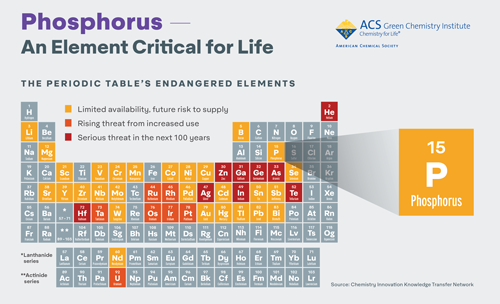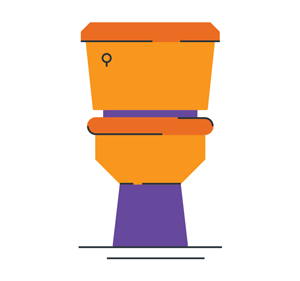Phosphorus
What is Phosphorus?
Phosphorus is essential for life and has no substitute. Phosphate rock is a finite resource that was formed from the mineralization of dead sea creatures over tens of millions of years and then lifted to the land via tectonic uplift. It is one of the three key ingredients in fertilizer.

Where is Phosphorus from?
Phosphorus is present in soils, to different degrees, depending on the bedrock. However, most applied phosphorus comes from phosphate rock mining.
71% of the world’s phosphate rock reserves are in Morocco, some of which comes from the contested region of Western Sahara.Phosphorus in the soil is distributed unequally around the globe. For example, the soils in sub-Saharan Africa have very litt le phosphorus in them naturally. Where phosphorus is lacking, fertilization is necessary for agricultural productivity.
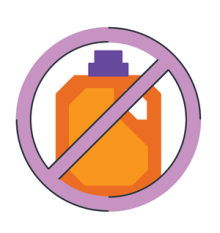
How is Phosphorus Used?
- 90% of phosphate rock is used for food production
Phosphate is used in detergents to make them more efficient, but has been largely banned in the U.S., Europe and elsewhere due to its environmentally damaging role in eutrophication. However, in some parts of the U.S., it is still used in dishwashing and industrial detergents.
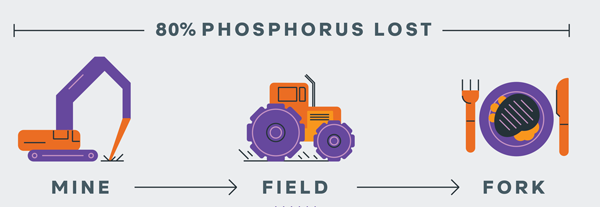
Why is Phosphorus a Critical Element?
- Supply chain loss
- Supply & demand
80% of phosphorus is lost or wasted in the supply chain from mine, to field, to fork. Most phosphorus is ultimately lost to water bodies via agricultural runoff and waste water. Excess phosphorus in water causes algal blooms and eutrophication. It’s estimated that eutrophication costs the United States $2.2 billion annually.
Peak phosphorus is estimated between 2025 and 2084, after which high-quality sources of phosphorus will diminish and become harder and more expensive to extract. At the same time, phosphorus demand is rising with most demand coming from developing countries. There are no substitutes for phosphorus in agriculture.
Solving the phosphorus problem is critical to meeting U.N. Sustainable Development Goal #2: End hunger, achieve food security and improved nutrition and promote sustainable agriculture.
What Can We Do to Save Phosphorus?
Chemists
- Improving soil fertility monitoring and fertilizer application.
- Making innovations in time-release fertlizer.
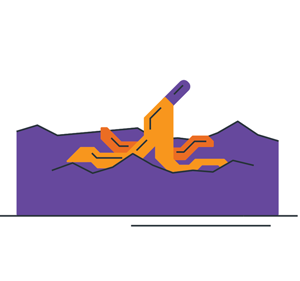
Institutions
- Washing less food decreases the demand for phosphorus, and composting kitchen scraps keeps phosphorus in the soil.
- Eating a diet with less meat and dairy reduces phosphorus-heavy livestock rearing.
Individuals
- Recovering from waste treatment plants the three million tons of phosphorus we pass through in our urine and feces globally each year.
- Recycling industrial phosphorus waste, such as phosphine oxides.
-
1. Cordell, D.; White, S. Life’s Bo leneck: Sustaining the World’s Phosphorus for a Food Secure Future. In Annual Review
of Environment and Resources; Gadgil, A., Liverman, D. M., Eds.; Annual Reviews: Palo Alto, CA, 2014; Vol 39, pp
161-188. htt ps://doi.org/10.1146/annurev-environ-010213-113300
2. Cordell, D.; White, S. Sustainable Phosphorus Measures: Strategies and technologies for achieving phosphorus
security. Agronomy, 2013, 3(1), 86-116. https://doi.org/10.3390/agronomy3010086
3. Dodds, W. K.; Bouska, W. W.; Eitzmann, J. L.; Pilger, T. J.; Pi s, K. L.; Riley, A. J.; Schloesser, J. T.; Thornbrugh, D. J.
Eutrophicaon of U.S. freshwaters: Analysis of potenal economic damages. Environ. Sci. Technol. 2009, 43(1), 12-19.
4. Metson, G. S.; Benne , E. M.; Elser, J. J. The role of diet in phosphorus demand. Environmental Research Letters, 2012.
5. U.S. Geological Survey, Mineral commodity summaries 2019, pp 200, https://doi.org/10.3133/70202434.
ACS GCI's Green Chemistry and Engineering Conference
The 28th Annual Green Chemistry & Engineering Conference will be held June 2-5, 2024 in Atlanta, Georgia, with the theme AI-Generated Green Chemistry.

